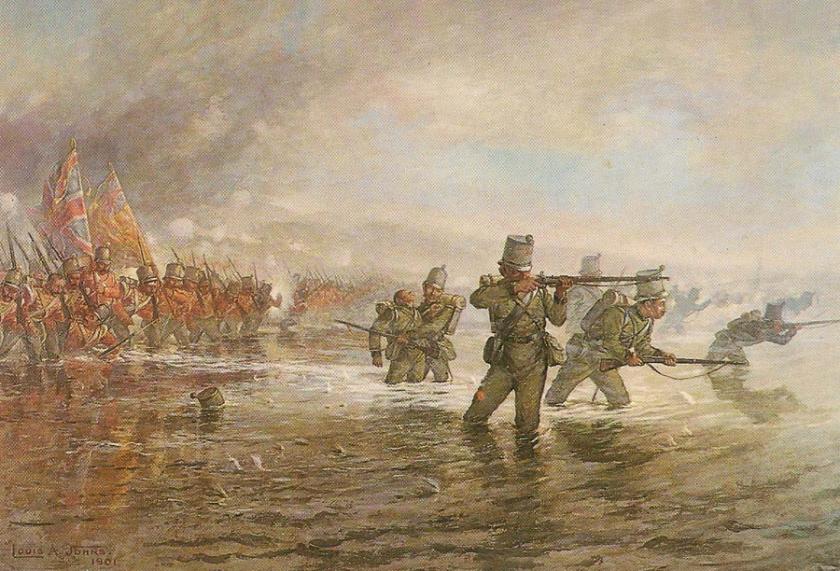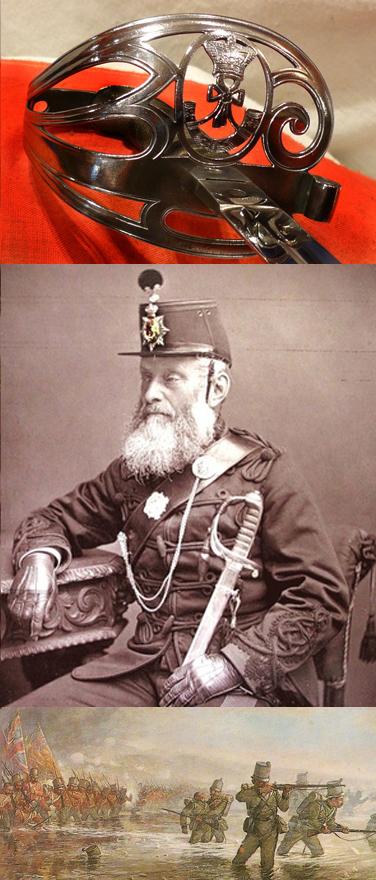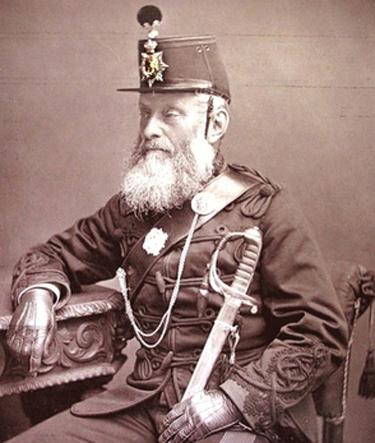Victorian Light Infantry Rifles Officers Sword Crimean War, Zulu War
Used during the Crimean War, Indian Mutiny, Zulu War, & the China Wars in the Victorian period, and later right through the 20th century into WW1 and WW2. This is a Victorian made sword, made in around 1850, but it is still the current use pattern rifles officer's sword today. The blade has full etching, but worn through combat use overall. Regulation Gothic pieced Light Infantry bugle hilt in steel with crown over roped bugle. Wire bound sharkskin grip. Hilt bright grey steel. While most regiments fought in tight formation, allowing easy administration of orders; with light infantry working in small groups, in advance of the main line, complicated bugle calls were developed to pass orders. Because of the use of the bugle, rather than the standard line infantry drum, the bugle horn had been the badge of light infantry regiments since 1770, adapted from the Hanoverian Jäger regiments, and became standard for the newly formed Light Infantry regiments, since it represented the bugle calls used for skirmishing orders.
While skirmishing, light infantry fought in pairs, so that one soldier could cover the other while loading. Line regiments fired in volleys, but skirmishers fired at will, taking careful aim at targets. While consideration was given to equipping light infantry with rifles, due to their improved accuracy, expected difficulty and expense in obtaining sufficient rifled weapons resulted in the standard infantry musket being issued to most troops. The accuracy of the musket decreased at long range and, since the French chasseurs and voltigeurs also used muskets, it is likely that skirmishers' firefights took place at ranges of only 50 yards (or less). 10 yards provided the accuracy of point-blank range. Although the French infantry (and, earlier, the Americans) frequently used multi-shot and grapeshot in their muskets, the British light infantry used only standard ball ammunition.
Light infantry were equipped more lightly than regular line regiments, and marched at 140 paces per minute.
Tasks of the light infantry included advance and rear guard action, flanking protection for armies and forward skirmishing. They were also called upon to form regular line formations during battles, or as part of fortification storming parties. During the Peninsular War, they regarded as the army's elite corps. No scabbard
Code: 23749



